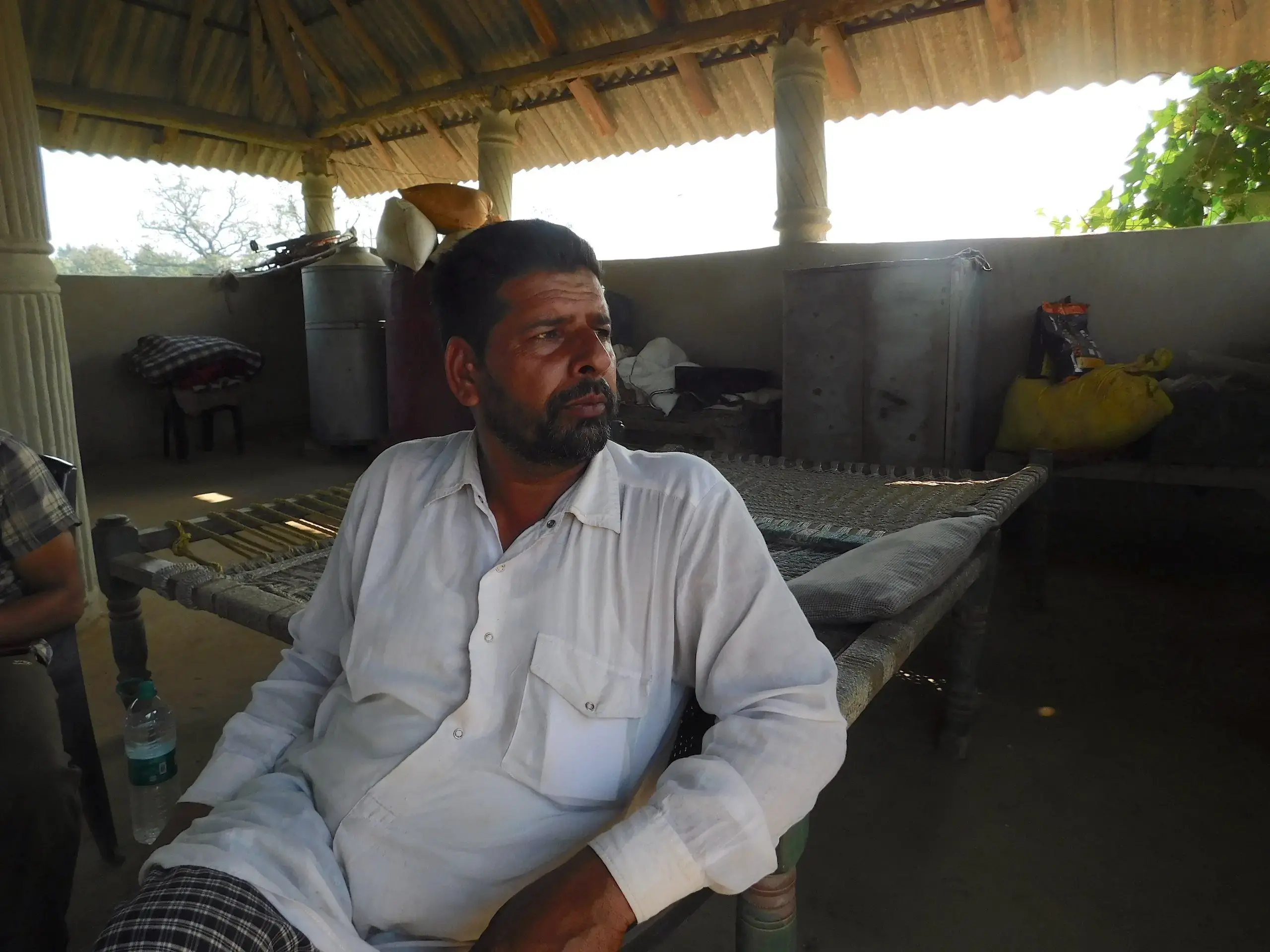
The Van Gujjars — a pastoralist community in the Indian state of Uttarakhand — are on the front line of climate change, but their role in forest management is limited by the rights they are denied.
"Remove Van Gujjars from the forests … and all the animals will die of thirst,” says Mohammad Safi, a community leader. “Van Gujjars create suuta [small ponds] from natural springs,” providing much needed water during the summer months to sustain both their cattle and wild animals. Safi, 55, highlights the crucial role this traditional pastoralist community has in shaping the land they inhabit. Known for their seasonal migrations to neighbouring states, or across the Kumaon and Garhwal regions of Uttarakhand with their cattle, the Van Gujjars embody the interdependence they share with the delicate ecosystem around them.
As climate impacts intensify, the Van Gujjars’ role in ecosystem management becomes all the more crucial, but also more challenging. Uttarakhand, a Himalayan state, is highly prone to climate-induced disasters, highlighted by the government in its climate action plan more than a decade ago. As such disasters have increased, the Van Gujjars have found themselves on the front lines because of their reliance on milk production and the bountiful forests and grasslands of the region. The devastating floods of 2023 severely impacted them, wiping out cattle and livelihoods, with landslides claiming 100 deaths across the state.

As a nonprofit journalism organization, we depend on your support to fund more than 170 reporting projects every year on critical global and local issues. Donate any amount today to become a Pulitzer Center Champion and receive exclusive benefits!

Forest fires are also a growing concern in Uttarakhand, with numbers soaring from 922 in 2002 to 41,600 in 2019. “Forest fires have a huge impact on our communities as they destroy large parts of grasslands that our cattle use to graze,” according to Ameer Hamza, president of the Van Gujjar Tribal Yuva Sangathan (VGTYS), a youth organisation. “Birds, who are vital for the distribution of seeds, lose their habitat due to forest fires, which affects the regeneration of grass in the region.”
Climate change is also drying out springs across the state, depriving the community of vital water sources in summer. These springs could previously be relied on to provide lush grazing grounds, abundant with unique biodiversity, he adds.
Recognition and rights
While climate disasters take a huge toll on the community, state failure to recognise and address the links between floods, forest fires, and dwindling water sources — in addition to inadequate compensation — has compounded the problem.
“Census data does not categorise them as pastoralists,” says Aniruddh Sheth of the Centre for Pastoralism, highlighting the inadequacy of census categorisation. “At best, the data mentions animal husbandry against their name. It does not say whether they are mobile or settled. Even the livestock census does not categorise the cattle as mobile.”
In contrast to the neighbouring state of Himachal Pradesh, where Van Gujjars enjoy recognition as Scheduled Tribes under the Indian Constitution, in Uttarakhand they are identified as Other Backward Castes (OBCs). The last Indian census to enumerate population by caste — except for Scheduled Castes and Scheduled Tribes — was undertaken in 1931, so exact numbers of those classified as OBCs are not reflected in official census reports. Hamza estimates the Van Gujjar population in Uttarakhand to be between 60,000 and 70,000, which he says is significantly lower than in Himachal Pradesh and Jammu and Kashmir, where estimates range between 92,000 and 980,000, respectively.
Often classified as ‘encroachments’, Gujjar homes, called khattas — which typically have roofs made of plastic or tin sheets — reflect lack of recognition of their rights over their own lands. “Van Gujjars have encroached upon the land permitted around their demarcated area. The department has taken due action from time to time for their eviction,” said Poonam Kainthola, sub-divisional officer of Ramnagar Division.
However, several accounts and records show that the problem is layered. Despite their longstanding presence in Uttarakhand, Van Gujjars face consistent threats, often under the guise of specific conservation policies or in the pursuit of plantation and infrastructure developments.

“If people are permanently settled, then the forest area can be converted into a revenue village. Only if they are turned into revenue villages can they benefit from government schemes,” says Manoj Chandran, chief conservator of forests from Uttarakhand’s forest department. Munish Kumar, coordinator of the civil society organisation Samajwadi Lok Manch, says that in Ramnagar Division alone there are over two dozen forest settlements where people lack basic facilities such as water and electricity. Sheth explains that this lack of recognition is directly linked to compensation because “if you can’t prove ownership then it’s difficult to compensate”.
Limited access to education, particularly among women, is an added challenge. Many community members lack formal education because there are very few government schools near khattas, resulting in limited representation across government. “One can count the number of Van Gujjars employed in government jobs on fingertips,” says Mohammad Ishaak, a leader with the VGTYS.
“I am the only woman in my village to have done a BSc. Most girls are not educated,” says Nagma Bhadana, a teacher, 20, from Kathiyari village. Without education, she says, it is hard for women to take up leadership roles, which is desperately needed.
“Since we don’t have gas cylinders in our villages, women need to venture into the forests to collect wood for fuel,” she says.
Women’s health, especially that of pregnant women, is particularly affected as the nearest hospitals are often 15-20 kilometres away. “Ambulances refuse to come to our villages as there are no roads. Most deliveries take place at home. Most women have never gotten their blood tested or have had an ultrasound, even when they needed it. Often, women give birth during their travel to the hospital, in open fields,” she says.

Over the past five years, however, there have been signs of improvement due to collective efforts from the community. “We [now] encourage children, especially girls, to study and honour students who have completed their schooling,” Bhadana says.
Lost in the woods: exclusion and the state
The 2006 Forest Rights Act offered a potential solution. Intended to grant forest dwellers rights to their traditional lands, it could have empowered the community. Instead, Uttarakhand’s poor implementation has left the Van Gujjars marginalised. Government data presented to the Rajya Sabha, India’s upper house of parliament, revealed that Uttarakhand had rejected the vast majority of claims. Only 184 individual claims and 1 community rights claim were accepted out of 3,587 and 3,091, respectively, through to November 30, 2022, resulting in zero settlement of forest land under the Act. While individual claims acknowledge the rights of individuals, community claims extend to rights over shared land. These include rights of burial, worship, access to drinking water sources and more.
Without such recognition, the Van Gujjars are effectively excluded from consultations on forest issues, despite their experience in forest management.
“We celebrate our traditional sela [green] festival every year, where everyone in the community plants their traditional trees and brings seeds of various plants,” Hamza says. Invitations are sent out to forest officials, “However, not a single [District Forest Office] level officer has [ever] come.”
Mustafa Lodha, who owns the largest herd of buffaloes in Shyampur, explains how seeds trapped in the heels of their herd help in forest regeneration. Community leaders also cite lopping, a traditional practice crucial for conserving forests and biodiversity, as it provides fodder for livestock and — according to Hamza — attracts other forest animals like deer. But with no way of engaging formally with forest officials, their insights are ignored.
“Has the government [ever] asked how animals have survived in these forests?” says Hamza, highlighting the states’ failure to recognise the contribution Van Gujjars have made to local conservation.
“We helped its biodiversity flourish. But we’re not given any credit for it,” he says. “Instead, our rights aren’t recognised and we are relegated to the sidelines.” He questions if bureaucratic paperwork will inevitably lead to their eviction, resignedly adding, “and I will be thrown out of this land.”











